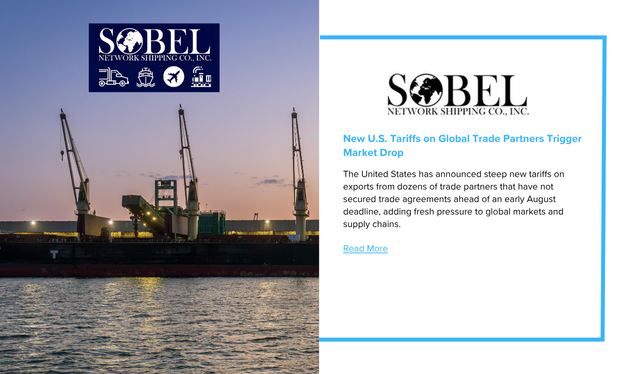The United States has announced steep new tariffs on exports from dozens of trade partners that have not secured trade agreements ahead of an early August deadline, adding fresh pressure to global markets and supply chains.
Roughly 40 countries with which the U.S. runs a trade deficit will face a minimum import duty of 15%, with higher rates applied to certain nations — including tariffs of up to 50% on select goods. The new measures are set to take effect around August 7, with officials indicating that negotiations could still occur after the initial implementation.
Financial markets reacted sharply to the announcement, with major U.S. indexes falling in early trading. Analysts warn that the combination of higher tariffs and recently suspended low-value import exemptions could significantly reshape sourcing strategies, increase costs, and disrupt established trade flows.
Industry experts stress that tariffs, while aimed at creating fairer trade balances, ultimately increase costs for importers and consumers. Higher duties can lead to elevated retail prices, reduced hiring, scaled-back investments, and slower innovation.
Logistics professionals report a surge in demand for guidance on navigating the rapidly changing trade environment. Many companies are reassessing their supply chain structures — moving beyond basic diversification strategies toward multi-tiered sourcing plans that emphasize geopolitical stability, cost efficiency, and business continuity.
As supply chain teams adapt, businesses are being urged to secure production timelines, explore alternative sourcing markets, and plan for potential downstream effects, from port congestion to last-mile delivery challenges. The next several months are expected to be critical for companies seeking to minimize disruption and maintain competitiveness in the shifting global trade landscape.


